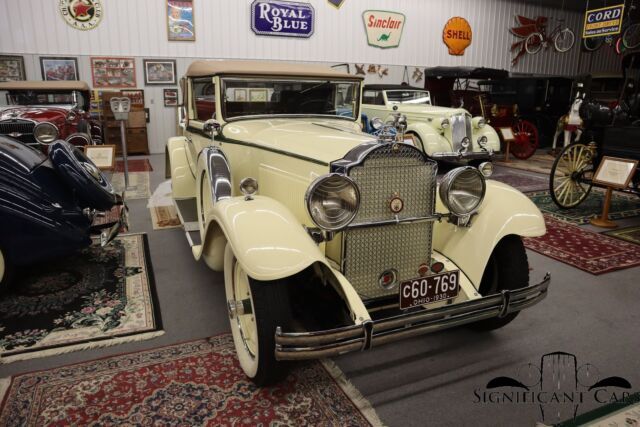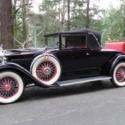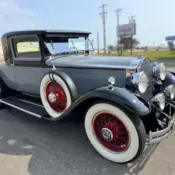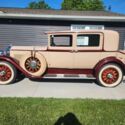1930 Packard 733 Conv Coupe Spectacular Example
| Make: | Packard |
| Model: | 733 Convertible Coupe |
| Year: | 1930 |
| Mileage: | 80000 |
| VIN: | 297096 |
| Color: | Other |
| Engine: | Straight 8 |
| Transmission: | Manual |
| Interior color: | Other |
| Vehicle Title: | Clean |
| Item location: | Indianapolis, Indiana, United States |
1930 Packard 733 Convertible Coupe Additional Info:
Packard was founded by brothers James Ward Packar, William Doud Packard and his partner George Lewis Weiss in the city of Warrne OH. James Ward believed that they could build a better horseless carriage that the Winton cars owned by Weiss (An important Winton stockholder) and James Ward, himself a mechanical engineer, had some ideas how to improve on the designs of current automobiles. By 1899, they were building vehicles. The company, which they called the Ohio Automobile Company, quickly introduced a number of innovations in its designs, including the modern steering wheel and years later the first production 12-cylinder engine. While Ford was producing cars that sold for $440, the Packards concentrated on more upscale cars that started at $2,600. Packard automobiles developed a following not only in the United States, but also abroad, with many heads of state owning them. In need of more capital, the Packard brothers would find it when Henry Joy, a member of one of Detroit's oldest and wealthiest families, bought a Packard. Impressed by its reliability, he visited the Packards and soon enlisted a group of investors that included his brother-in-law, Truman Newberry. In 1902, Ohio Automobile Company became Packard Motor Car Company, with James as president. Packard moved its automobile operation to Detroit soon after and Joy became general manager and later chairman of the board.
The Packard's factory on East Grand Boulevard in Detroit was designed by Albert Kahn, and included the first use of reinforced concrete for industrial construction in Detroit. When opened in 1903, it was considered the most modern automobile manufacturing facility in the world and its skilled craftsmen practiced over eighty trades.The 3.5 million ft plant covered over 35 acres and straddled East Grand Boulevard. It was later subdivided by eighty-seven different companies. Kahn also designed The Packard Proving Grounds at Utica, MI. Throughout the nineteen-tens and twenties, Packard built vehicles consistently were among the elite in luxury automobiles.
The company was commonly referred to as being one of the "Three P's" of American motordom royalty, along with Pierce and Peerless. Packard's leadership of the luxury car field was supreme. Entering into the 1930s Packard attempted to beat the stock market crash and subsequent depression by manufacturing ever more opulent and expensive cars than it had prior to October 1929. The Packard Twin Six was introduced for 1932, and re-named the Packard Twelve for the remainder of its run (through 1939).
1934 is arguably the most desirable Year of Production for Classic Era Packards. The fully skirted fenders and v grill, headlights, cowl and running lights add to the perfect proportion of style and grace. They are also very drivable cars that handle and ride much better than the earlier cars.
This car was the subject of a Complete body off restoration to top show standards some years back, but has only been displayed in the Collection and shown at Concours since, so still presents as freshly restored car in every respect. A CCCA Senior First Place Winner, the car really is without fault and still would score First Place awards. Finished in a striking Cream with Green Belt Moldings, Tan Leather Interior and Tan Top with Green Leather trim, this tastefully restored car is a true show stopper. It has just the right amount of Green to really make the car pop visually in person. This is just a lovely car.
I do not like the photography here, even though I did take these photos. It was a very bright day and the camera I used was on the wrong setting, so the pictures taken outside are very washed out. The photos taken indoors in its current Museum like Setting do a better job of representing the cars very nice color combination. This is a stunnng car and these photos do not do it justice.












